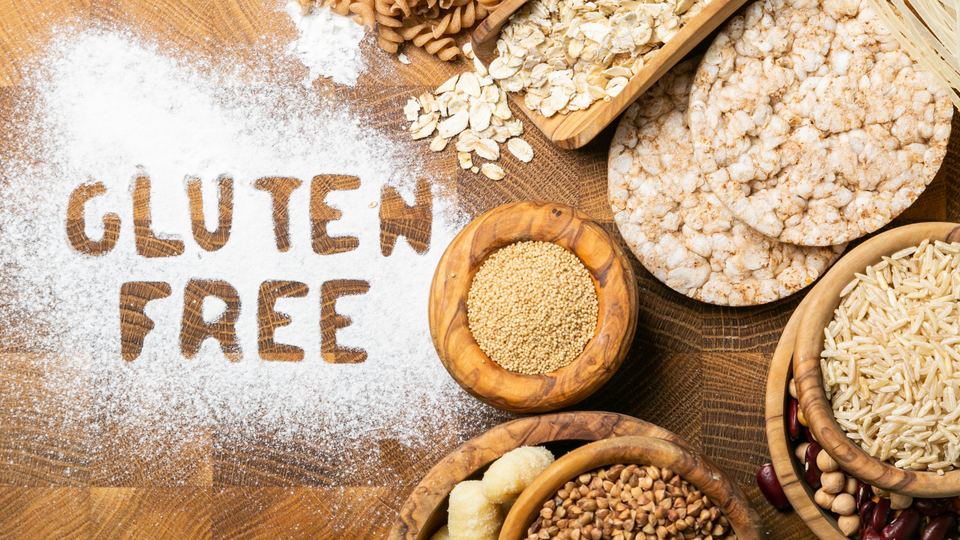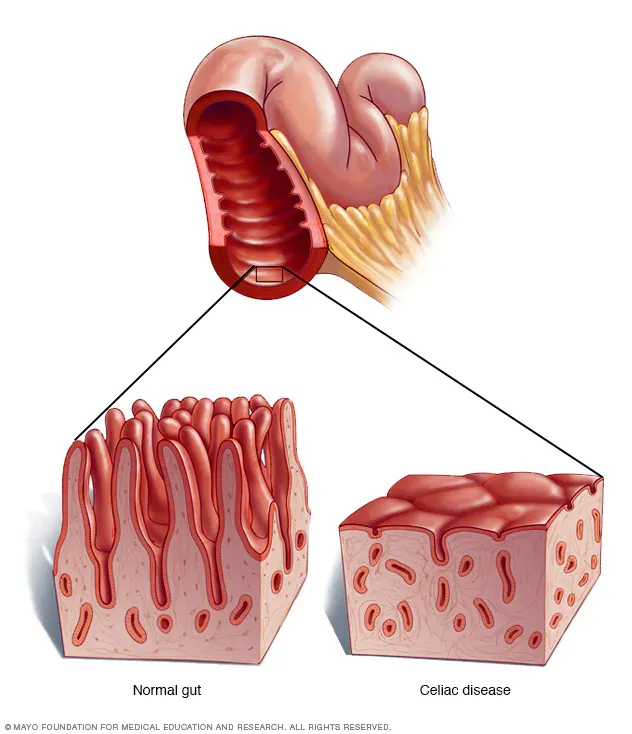Gluten-Free or Gluten-Full: Which Path is Right for You? Uncover the Truth About Gluten and Your Health

Gluten, a protein found in wheat, barley, and rye, has gained significant attention in recent years due to its connection with celiac disease and gluten sensitivity. In this blog post, we will delve into the rise in celiac disease, explore non-celiac gluten sensitivity, understand the gluten-inflammation connection, and discuss the impact of gluten on autoimmune conditions. We will also examine whether gluten elimination or moderation is the right approach and provide insights on how to conduct a gluten experiment. Let's begin by understanding celiac disease and its prevalence.
The Rise in Celiac Disease
Celiac disease is an autoimmune disorder where the ingestion of gluten triggers an immune response, damaging the lining of the small intestine. Symptoms include gastrointestinal issues, nutrient deficiencies, and fatigue. The prevalence of celiac disease has been increasing globally, affecting people from various regions and populations. Genetic factors play a significant role in its development, and genetic testing can help identify those at higher risk.

Non-Celiac Gluten Sensitivity
Non-celiac gluten sensitivity is a condition in which individuals experience symptoms similar to celiac disease without the associated intestinal damage. Differentiating between celiac disease and gluten sensitivity is crucial for accurate diagnosis and treatment. While gluten sensitivity lacks specific biomarkers, it can present with gastrointestinal symptoms, fatigue, and neurological manifestations.
The Gluten-Inflammation Connection
Gluten can influence the zonulin pathway, which regulates intestinal permeability. This can lead to a condition known as leaky gut syndrome. Gluten can also trigger an inflammatory response, contributing to chronic systemic inflammation. Additionally, the structure of gluten proteins poses challenges for proper digestion, potentially causing gastrointestinal symptoms.
Gluten and Autoimmunity
Gluten proteins can mimic certain human proteins, leading to an immune response and potential autoimmune reactions. Emerging research suggests that gluten may impact the nervous system and the integrity of the blood-brain barrier. There is also evidence linking gluten sensitivity with autoimmune thyroid disorders like Hashimoto's thyroiditis, highlighting the potential benefits of a gluten-free diet for individuals with such conditions.
Gluten Elimination or Moderation?

For individuals with celiac disease, strict avoidance of gluten is crucial in managing symptoms and preventing complications. Celiac disease is an autoimmune disorder where the ingestion of gluten triggers an immune response, damaging the lining of the small intestine. Even small amounts of gluten can cause significant harm to individuals with celiac disease. Therefore, it is essential for them to follow a gluten-free diet consistently.
However, for those without celiac disease or gluten sensitivity, the approach to gluten consumption is more nuanced. It is important to note that gluten itself is not inherently harmful to most people. It is a common component of many staple foods and provides elasticity and texture to baked goods. Most individuals can digest gluten without experiencing any adverse effects.
Determining whether to limit gluten consumption depends on individual circumstances. Some people may choose to reduce their gluten intake due to personal preferences or beliefs, such as following a gluten-free diet for potential health benefits or weight management. However, it is crucial to make informed decisions and consider the following factors:
- Personal Symptoms: Pay attention to any digestive discomfort or adverse reactions after consuming gluten-containing foods. Some individuals may experience bloating, abdominal pain, diarrhea, or other gastrointestinal symptoms after consuming gluten. If you notice consistent symptoms, it may be worth exploring the possibility of gluten sensitivity or intolerance.
- Medical Advice: Consult with a healthcare professional, such as a doctor or registered dietitian, who can assess your specific health situation and provide guidance. They can help determine if further investigation or testing is necessary to identify gluten-related issues or other underlying conditions.
- Gluten Elimination Trial: If you suspect gluten sensitivity or intolerance, you may consider conducting a gluten elimination trial. This involves removing all sources of gluten from your diet for a period of time, typically several weeks, and then reintroducing it while monitoring any symptoms or changes in your well-being. This trial can help you identify if gluten is a potential trigger for your symptoms.
- Farming Practices and Food-Preparation Processes: It is worth noting that farming practices and food-preparation processes can impact gluten tolerance. Modern agricultural practices may have altered the gluten content or composition in certain grains, potentially affecting individuals' response to gluten. Additionally, cross-contamination during food preparation can introduce traces of gluten into otherwise gluten-free foods. Being mindful of these factors and opting for organic or certified gluten-free products when necessary can help ensure gluten avoidance if desired.
It is essential to remember that gluten is not inherently harmful to the majority of individuals. Restricting gluten without a medical reason may unnecessarily limit dietary choices and nutrients. If you suspect a gluten-related issue, it is advisable to seek professional guidance to make an informed decision about your gluten consumption. A healthcare provider or registered dietitian can provide personalized advice based on your specific health history, symptoms, and dietary needs.
How to Conduct a Gluten Experiment
Conducting a personal gluten experiment can provide insights into gluten sensitivity or its effects on the body. It is important to be self-aware and track symptoms during the experiment. A gluten elimination trial can be conducted, with a recommended duration and considerations to avoid pitfalls. Consulting with a healthcare provider before making significant dietary changes or embarking on a gluten experiment is crucial for professional guidance and monitoring.

Protocol for Conducting a Gluten Elimination Trial:
1.Prepare for the Trial:
- Before starting the gluten elimination trial, educate yourself about gluten-containing foods and ingredients to ensure you understand what needs to be avoided.
- Familiarize yourself with gluten-free alternatives and products that you can include in your diet during the trial.
Grains and Flours:
- Rice (including brown, white, and wild rice)
- Quinoa
- Buckwheat
- Cornmeal and corn flour
- Oats (labeled gluten-free)
- Gluten-free flour blends (such as those made from rice, almond, coconut, or tapioca flour)
Breads and Baked Goods:
- Gluten-free bread (look for options made from gluten-free grains or alternative flours)
- Gluten-free wraps and tortillas
- Gluten-free crackers and rice cakes
- Gluten-free muffins, cookies, and cakes (made with gluten-free flours)
Pasta and Noodles:
- Gluten-free pasta (made from rice, corn, quinoa, or legume flours)
- Gluten-free rice noodles or bean thread noodles
Dairy and Dairy Alternatives:
- Milk (cow's milk, almond milk, soy milk, rice milk, or other non-dairy alternatives)
- Cheese (check for gluten-free labeling or choose naturally gluten-free varieties)
- Yogurt (plain varieties without added gluten-containing ingredients)
Proteins:
- Fresh meat (such as chicken, beef, pork, and fish)
- Eggs
- Legumes (lentils, beans, chickpeas)
- Nuts and seeds
- Tofu and tempeh
Fruits and Vegetables:
- All fresh fruits and vegetables are naturally gluten-free.
- Use them as the base for meals, snacks, and side dishes.
Condiments and Sauces:
- Gluten-free soy sauce or tamari
- Gluten-free salad dressings
- Mayonnaise (check for gluten-free labeling)
- Mustard and ketchup (check for gluten-free labeling)
- Homemade sauces using gluten-free ingredients (e.g., tomato sauce, pesto)
Snacks and Treats:
- Gluten-free granola bars
- Gluten-free popcorn
- Gluten-free chips and crisps (made from corn, potato, or other gluten-free ingredients)
- Gluten-free chocolate or candy (check for gluten-free labeling)
- Consider creating a meal plan or a list of gluten-free recipes to help you navigate the trial period.
2. Eliminate All Sources of Gluten:
- Begin the gluten elimination trial by completely removing all sources of gluten from your diet. This includes wheat, barley, rye, and their derivatives.
- Read food labels carefully to identify any hidden sources of gluten in processed foods, sauces, condiments, and medications.
- Be cautious of cross-contamination, especially if you share cooking utensils, cutting boards, or toasters with gluten-consuming individuals.
- Replace gluten-containing products with gluten-free alternatives, such as gluten-free grains (e.g., rice, quinoa, corn), gluten-free flours, and gluten-free breads and pastas.
- Ensure that you strictly adhere to the gluten-free diet throughout the elimination phase of the trial.
3. Duration of the Trial:
- The recommended duration for a gluten elimination trial is typically 2-4 weeks.
- During this period, it is important to be consistent and avoid accidental gluten consumption.
- Be patient, as it may take time for your body to adjust and for potential gluten-related symptoms to subside.
- Keep a journal or use a symptom-tracking app to record any changes in your physical well-being, digestion, mood, energy levels, and other relevant observations.
4. Monitor Symptoms and Reactions:
- Throughout the elimination trial, closely monitor any changes in your symptoms or how you feel.
- Note any improvements or alleviation of symptoms that may indicate a sensitivity or intolerance to gluten.
- Also, be aware of any potential withdrawal symptoms or changes that might occur as your body adjusts to the gluten-free diet.
- Record any instances of accidental gluten consumption and the subsequent reactions, if applicable.
5. Reintroduction of Gluten:
- After the elimination phase, you can reintroduce gluten-containing foods back into your diet gradually.
- Start with small amounts of gluten, preferably in its pure form (e.g., a single serving of wheat-based food), to observe any immediate or delayed reactions.
- Pay close attention to any physical or mental changes, such as digestive issues, fatigue, brain fog, mood swings, or skin reactions.
- It is recommended to reintroduce gluten-containing foods one at a time, with a gap of a few days in between, to clearly identify any specific reactions.
6. Evaluate and Reflect:
- After completing the gluten elimination trial, review your symptom journal or tracking app to evaluate the results.
- Look for patterns or correlations between gluten consumption and any observed symptoms or changes in your well-being.
- Consult with a healthcare provider or a registered dietitian experienced in gluten-related disorders to help interpret the results and provide further recommendations based on your individual needs.
Understanding gluten-related disorders, such as celiac disease and gluten sensitivity, is essential for making informed choices about dietary needs. While celiac disease requires strict gluten avoidance, the approach to gluten for those without an immunological reaction is more nuanced.
Considering the impact of gluten on inflammation, autoimmune conditions, and overall health is important. Finding the right balance between elimination and moderation and conducting a personal gluten experiment can provide valuable insights. As research continues, we hope to gain a deeper understanding of gluten-related disorders and their impact on human health.